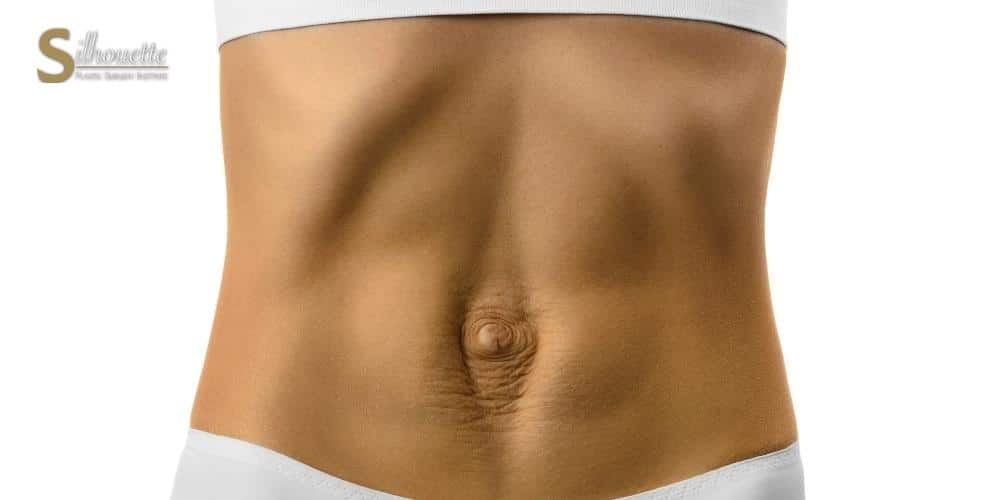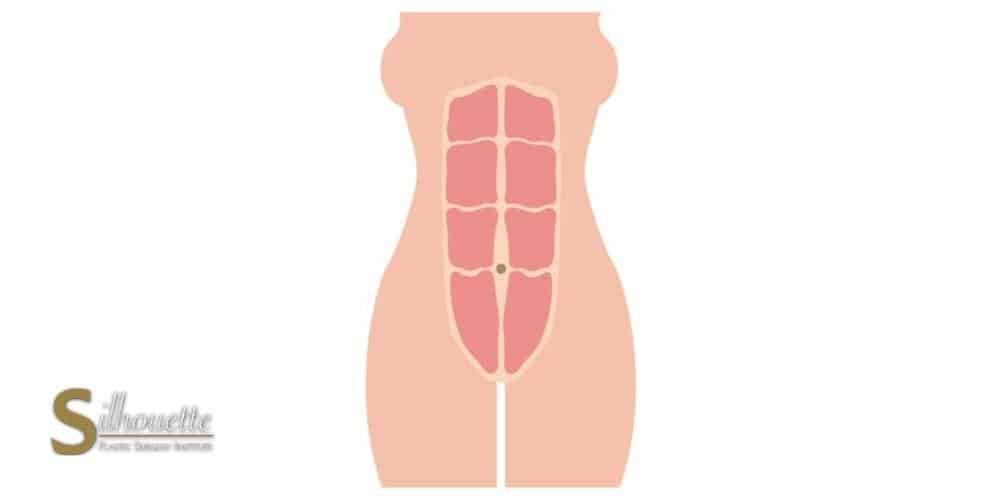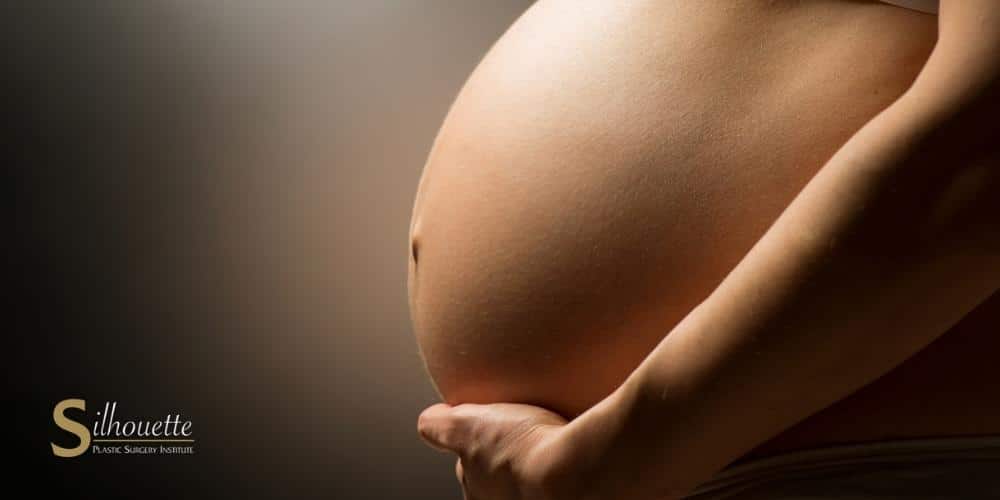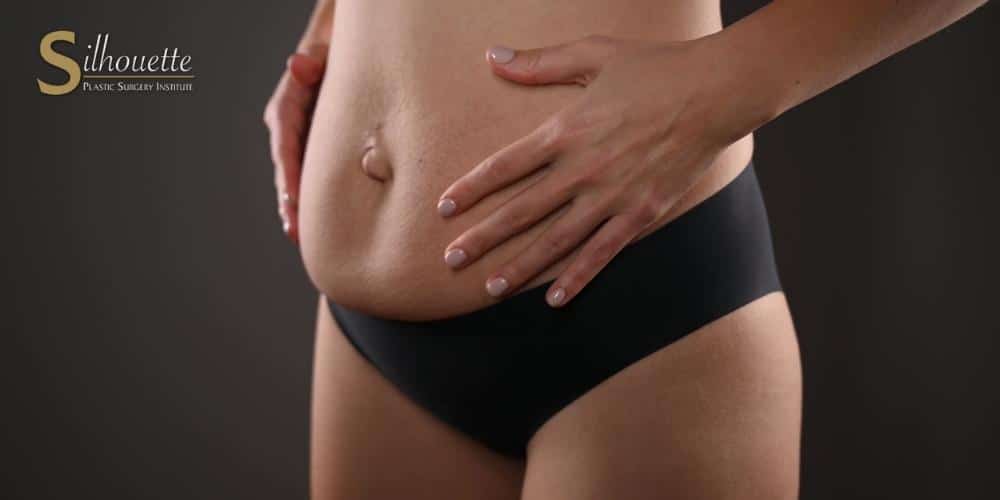Diastasis Recti Surgery Bakersfield, CA

Pregnancy and birth can change a woman’s body – internally and externally – forever. While this is certainly a beautiful thing, it can also be a physically and emotionally challenging thing for many women. One of the many physical changes that can come with pregnancy is a condition called diastasis recti, which is basically the complete separation of the abdominal muscles. Most women experience a physical deformity and excess skin in the abdomen. However, some women can also suffer from intense back pain, urinary incontinence, and even hernias from this condition. The only way to fix this muscular separation is through diastasis recti surgery.
Dr. Daneshmand is an experienced, board-certified plastic surgeon at Silhouette Plastic Surgery Institute. He has more than 30 years of experience in performing cosmetic surgery for patients all over the U.S. and the world. To schedule an appointment with him, call 949-359-8397 today.
What is the Diastasis Recti?
Diastasis recti (AKA: rectus diastasis) is a physical deformity caused by abdominal muscle separation. People who have this condition will generally have a large, visible gap on the surface of their stomachs where the abdominal separation occurred.
Diastasis recti doesn’t come with many symptoms other than a clear physical deformity and physical discomfort. However, people who have separated muscles in their stomachs may have a higher risk of developing an umbilical hernia, low back pain, and urinary incontinence.
Who Suffers From Diastasis Recti?
Women who have recently had a baby are the most common sufferers of diastasis recti. In the second and third trimesters of pregnancy, the abdominal muscles (rectus abdominis) will naturally separate to make room for the growing baby. During this time, the linea alba often appears. The linea alba is a dark line that goes down the middle of the stomach. It’s basically a thin line of connective tissue that separates the abdominal muscles.
For many women, the abdominal muscles move back together after giving birth. But this doesn’t happen for everyone. Some women are left with permanent loose skin and a deep bulge in the middle of their stomachs where the rectus abdominis muscle stays completely separated.
People who have never been pregnant can also suffer from this condition. Both men and women who have had significant weight gain in their abdominal area can develop diastasis recti.

What is Diastasis Recti Surgery?
Diastasis recti surgery is basically just sewing the separated muscles back together. Some plastic surgeons consider a rectus diastasis repair as a purely cosmetic procedure, especially if the patient doesn’t have any symptoms other than a physical deformity. However, if the condition results in complications like a hernia, back pain, and urinary incontinence, rectus diastasis repair is often considered necessary reconstructive surgery.
Many women choose to undergo diastasis repair along with other mommy makeover procedures such as a full tummy tuck (abdominoplasty), liposuction, and a breast lift. If the diastasis recti has created a hernia, a plastic surgeon will also perform a hernia repair.
How Diastasis Recti Surgery Works
Rectus diastasis repair is considered a major surgery, especially if the patient also requested a tummy tuck procedure in order to get rid of excess abdominal fat. However, if a patient is only undergoing a rectus diastasis repair, the surgeon may choose the minimally invasive route – laparoscopic surgery.
Open Surgery
In order to begin diastasis recti repair and a tummy tuck surgery, a board-certified plastic surgeon will make a horizontal incision in between the belly button and the pubic bone. So basically, the incision will be around your panty line. The surgeon will then lift up the abdominal skin and begin stitching the rectus muscles back together. If the surgeon sees that you have a hernia in the abdominal wall, they will also perform a hernia repair.
Then, the surgeon will trim the excess abdominal skin and pull it down tightly in order to sew it back up. The surgeon may also remove excess fat through liposuction, if the patient requested it and if the surgeon believes it is necessary. Lastly, the surgeon will create a new belly button because they removed the old one during the tummy tuck portion of the surgery.
Laparoscopic Surgery
If the patient only wants surgery for diastasis recti, then the surgeon will repair the muscles through laparoscopic surgery. The surgeon will begin by making a few small incisions in your abdomen and inserting tiny cameras through the incisions so they can see what they’re doing. Then, they’ll insert other surgical instruments into the tiny incisions in order to sew the rectus abdominis muscle back together. Not only does minimally invasive rectus diastasis surgery take less time than the open surgery, but the recovery time is also much quicker.
Diastasis Recti Surgery Risks
Repairing diastasis recti comes with its own set of risks, including:
- Infection in the abdominal region
- Numbness in the abdomen
- Swelling
- General pain and discomfort
- Excess bleeding
- An asymmetrical looking abdomen
- Major bruising
- Seroma, which is fluid accumulation inside the body
- Broken sutures
Before undergoing rectus diastasis surgery, you should take time to research the best board-certified plastic surgeons in your area. Although every single surgery comes with risks that not even the best surgeons can prevent, you still want a plastic and reconstructive surgeon who will perform the best job and take steps to prevent as many complications as possible.
Dr. Daneshmand in Bakersfield, CA is one of the many top notch surgeons who will do that for all his patients. He is no stranger to rectus diastasis repair, so you can rest assured that he will give you the best results possible.
Diastasis Recti Surgery Recovery Time
Recovery from your rectus diastasis repair will heavily depend on what kind of surgery you just went through. If you had an open rectus diastasis surgery with a tummy tuck surgery, you will likely have a 4 to 8 week long recovery period. Meanwhile, recovery from laparoscopic surgery is generally much shorter – between 4 to 6 weeks.
Most patients can go home the day of their surgery as long as they don’t show signs of major complications. You can expect some pain, swelling, soreness, and drains connected to your abdomen. You will also have to wear a compression garment in order to combat swelling.
Your plastic surgeon will give you careful instructions to follow as you heal, such as how to care for your wounds, when you can begin showering, when you can move around, when to remove your compression garment, how to care for your drains, and when to take your medications. Be sure to follow all these instructions so that you don’t develop any major complications, such as infection.
You should spend the majority of your recovery time resting. However, your plastic surgeon will still instruct you to get up and walk around several times a day to assist with blood circulation and healing. Other than short walks though, you should not be doing any heavy lifting or major exercise for several weeks.
Even after the 4 to 8 week mark, it’s common to still experience some minor soreness and swelling in the abdomen. Remember, you just endured muscle repair. You may feel sore when you bend over, cough, and laugh for a while.

Who is a Good Candidate for Diastasis Recti Repair?
A good candidate for rectus diastasis repair includes someone who:
- Has at least a 2 inch gap in between the abdominal muscles
- Has medical conditions such as strained back muscles, a hernia, or urinary incontinence due to diastasis recti
- Isn’t planning on getting pregnant again in the future (because pregnancy will just separate the abdominal muscles again, therefore undoing the effects of the surgery)
- Hasn’t been breastfeeding for several months
- Is at least 6 to 9 months postpartum
- Is at a stable weight has good health in general
- Hasn’t experienced much success in treating rectus diastasis with exercise, physical therapy, and general postpartum healing
- Doesn’t smoke
Alternatives to Diastasis Recti Surgery
Some doctors recommend alternatives to treat diastasis recti before automatically resorting to invasive surgery. While these alternatives won’t fix diastasis recti, they may reduce overall physical discomfort.
Physical therapy can be a lifesaver when it comes to back pain – and even urinary incontinence – caused by rectus diastasis. A physical therapist can give you an individualized exercise program to strengthen your core muscles and back muscles. Additionally, a physical therapist can help you strengthen your pelvic floor muscles which can improve urinary incontinence. Many patients experience major improvement in their diastasis recti symptoms with the right physical therapy program. Again, though, no amount of exercise will improve the appearance of the abdominal separation. Only rectus diastasis repair can do that.

Call Silhouette Plastic Surgery Institute Today
Dr. Daneshmand at Silhouette Plastic Surgery Institute is an experienced surgeon who is passionate about improving women’s health and appearance through procedures like rectus diastasis repair and tummy tucks. Dr. Daneshmand is also experienced in performing all other types of cosmetic and reconstructive surgery such as breast augmentations, rhinoplasties, BBL’s, and so much more. Call 949-359-8397 today to schedule an appointment at our clinic.
